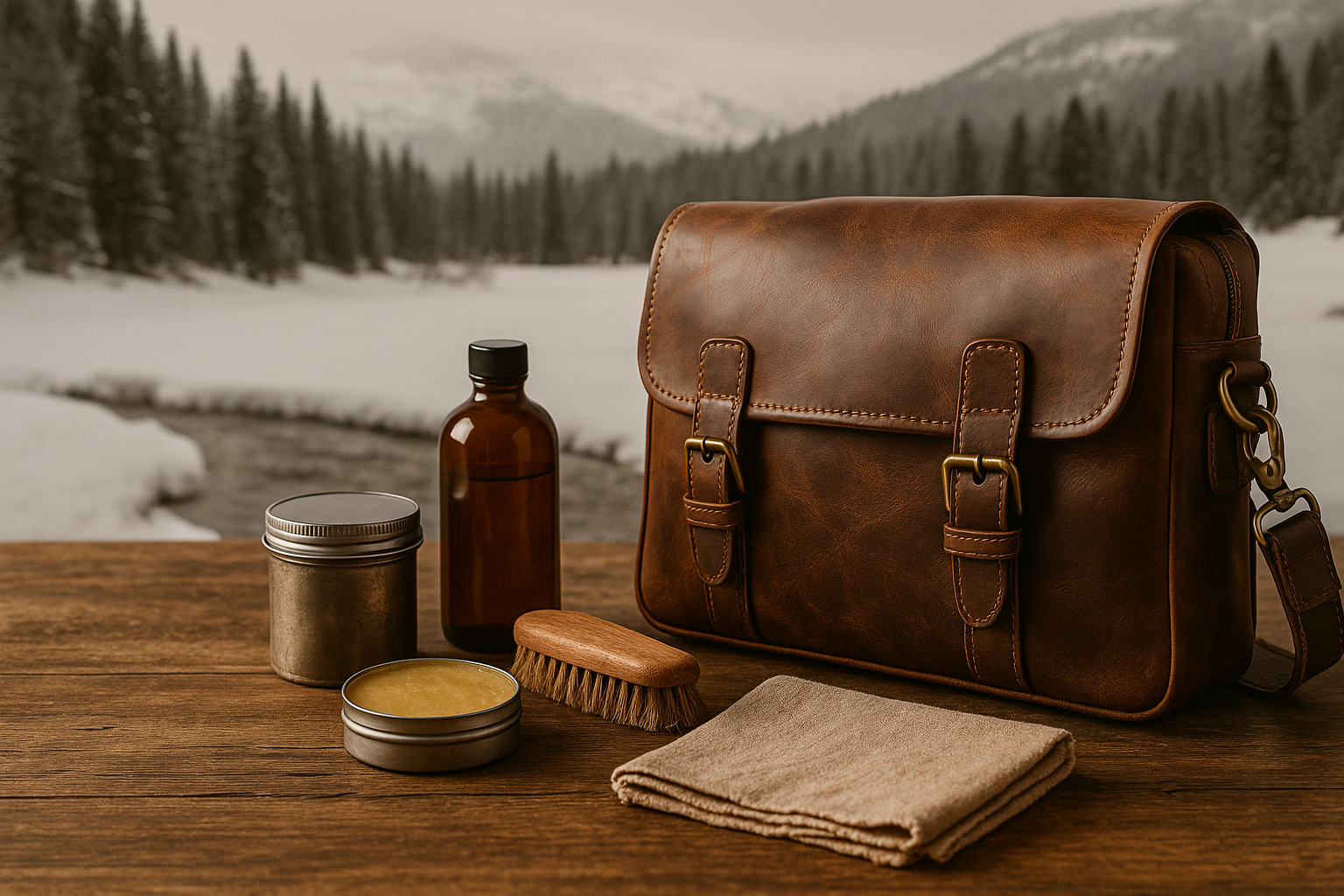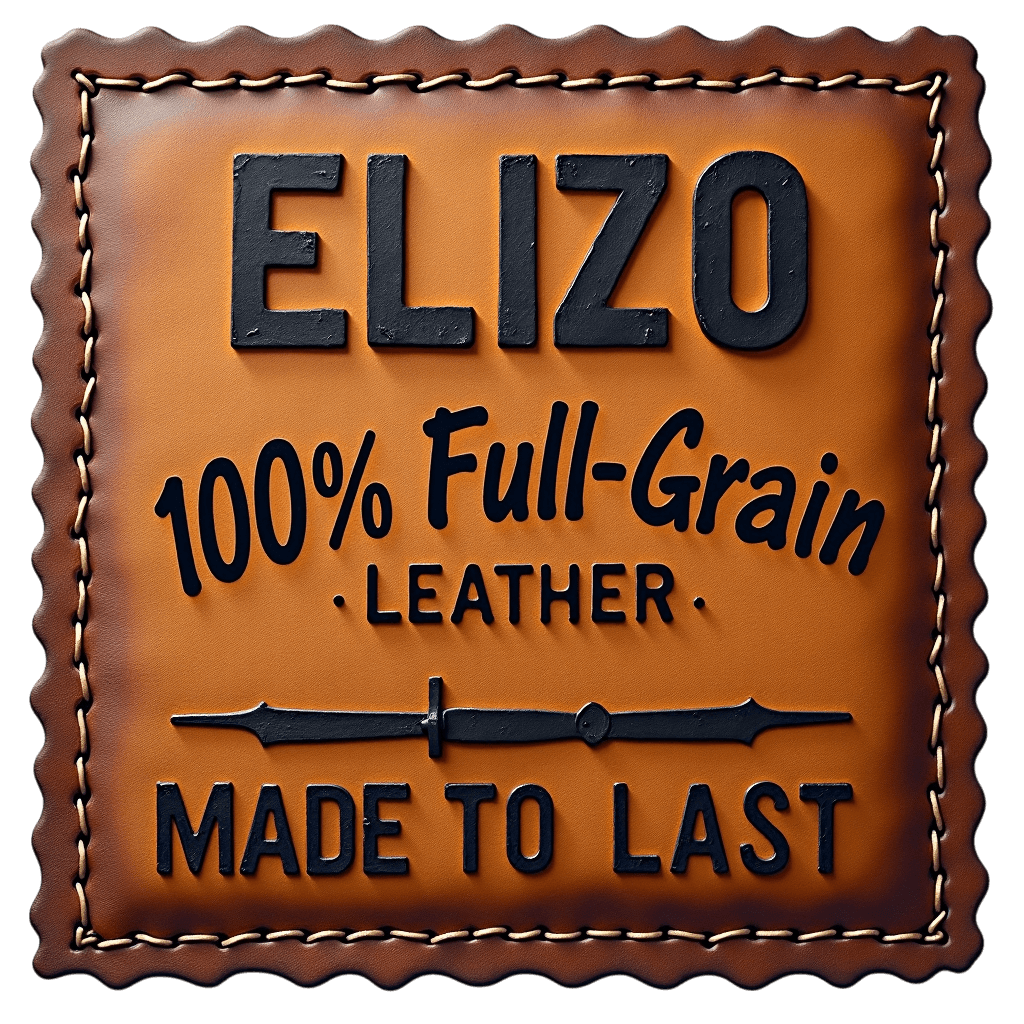
Seasonal Leather Care: Adapting Your Maintenance Routine Throughout the Year

Leather responds dynamically to environmental changes throughout the year, requiring adapted care routines that address seasonal challenges while preserving long-term beauty and functionality. Understanding how different seasons affect your leather accessories helps develop maintenance strategies that prevent damage while enhancing the natural aging process that makes quality leather so appealing.
From the dry conditions of winter heating systems to the humidity challenges of summer weather, each season presents unique opportunities and risks for leather care. Whether you're maintaining a leather briefcase for daily business use or preserving a leather duffle bag for weekend adventures, seasonal awareness transforms routine maintenance into proactive preservation that extends leather life while enhancing appearance.
Understanding Seasonal Environmental Impacts
Environmental conditions directly affect leather's molecular structure, moisture content, and aging characteristics. Quality leather is hygroscopic, meaning it naturally absorbs and releases moisture in response to ambient humidity levels, creating expansion and contraction cycles that influence both appearance and durability.
Humidity and Moisture Effects
Leather's relationship with moisture determines much of its seasonal care requirements. High humidity environments can cause leather to become overly soft, potentially leading to shape distortion in structured items like portfolios and briefcases. Conversely, extremely dry conditions can cause cracking and brittleness that compromises both appearance and structural integrity.
Understanding your regional humidity patterns helps anticipate leather care needs throughout the year. Coastal areas with consistent moderate humidity require different approaches than desert regions with extreme dryness or tropical areas with persistent high humidity.
Monitor how your leather accessories respond to seasonal humidity changes, noting which pieces show sensitivity and require extra attention during challenging environmental periods.
Temperature Variations and Thermal Stress
Temperature fluctuations affect leather flexibility and oil distribution, with extreme temperatures causing stress that can accelerate wear patterns. Cold temperatures make leather stiff and potentially brittle, while excessive heat can cause oils to migrate or evaporate, leading to dry spots and uneven aging.
Indoor heating systems create particularly challenging conditions by combining elevated temperatures with reduced humidity, creating a double stress that requires proactive care to prevent damage.
Consider storage locations throughout your home or office, ensuring leather items avoid direct exposure to heating vents, radiators, or air conditioning units that create extreme localized conditions.
Spring Renewal and Preparation
Spring represents an ideal time for comprehensive leather assessment and renewal after winter's dry, harsh conditions. The moderate temperatures and increasing humidity provide optimal conditions for deep conditioning and repair work that prepares leather for the active months ahead.
Post-Winter Assessment and Recovery
Conduct thorough inspections of all leather items after winter, looking for signs of drying, cracking, or damage from harsh conditions. Pay particular attention to items exposed to winter weather, road salt, and dry indoor heating environments.
Focus assessment on stress points like corners of wallets, handles of messenger bags, and fold lines on regularly used accessories. These areas typically show winter damage first and benefit most from spring renewal treatments.
Document any damage with photos to track improvement after treatment and identify pieces that might need professional restoration services.
Deep Conditioning and Restoration
Spring's moderate conditions allow for intensive conditioning treatments that penetrate deeply while avoiding the complications of extreme temperatures or humidity. Use this opportunity to restore moisture balance and flexibility to leather that has become stiff or dry during winter.
Apply conditioning treatments gradually, allowing full absorption between applications rather than overwhelming leather with excessive product. This patient approach ensures optimal penetration and prevents over-conditioning that can cause structural softening.
Consider professional cleaning and restoration for valuable pieces that show significant winter damage or for items you want to maintain in pristine condition for important spring and summer events.
Preparation for Active Seasons
Spring conditioning prepares leather for increased activity during warmer months when travel bags see more use and exposure to varied environmental conditions. Well-conditioned leather resists moisture damage while maintaining flexibility for handling and use.
Apply protective treatments appropriate for anticipated spring and summer activities. Items used for outdoor activities might benefit from enhanced water resistance, while business accessories might require treatments that maintain formal appearance while providing basic protection.
As the artisan community becomes more active during spring, events like the South Lyon Spring Saturday Farmers and Artisans Market on April 12th, 2025 celebrate handcrafted goods including leather work. These events provide opportunities to connect with local artisans and learn care techniques from experienced craftspeople.
Summer Protection and Active Care
Summer presents unique challenges for leather care, combining increased activity levels with environmental stresses from heat, humidity, and potential exposure to water, sand, and other outdoor elements.
Heat and Humidity Management
High temperatures can cause leather oils to become overly active, potentially leading to migration or surface bleeding that creates uneven appearance. Monitor leather items for signs of oil bleeding, particularly on light-colored pieces or items stored in warm locations.
Increased humidity can make leather overly soft and susceptible to stretching or shape distortion. Store structured items like padfolios and briefcases with shape-maintaining inserts when not in use during humid periods.
Avoid leaving leather items in hot cars or direct sunlight for extended periods, as extreme temperatures can cause permanent damage including color fading, cracking, and structural failure.
Travel and Activity Considerations
Summer travel season increases exposure risks for leather accessories, requiring enhanced protective measures and more frequent maintenance routines. Leather toiletry bags face particular challenges from bathroom humidity and potential cosmetic spills during frequent travel.
Beach and water activities introduce salt exposure risks that require immediate post-activity care to prevent long-term damage. Rinse salt deposits promptly with fresh water and apply conditioning treatments to restore moisture balance.
Active summer lifestyles often increase handling frequency and environmental exposure for everyday items like wallets and small accessories, requiring more frequent cleaning and conditioning to maintain appearance.
Protective Strategies for Outdoor Activities
Summer outdoor activities require protective strategies that balance leather's natural beauty with practical durability needs. Consider protective sprays or treatments that enhance water resistance without compromising breathability or appearance.
Pack protective covers or cases for valuable leather items during camping, beach trips, or other activities where exposure to sand, dirt, or moisture is likely. Prevention often proves more effective than post-exposure restoration.
Plan activity-appropriate accessories, using more robust pieces for challenging environments while preserving delicate items for controlled conditions where their beauty can be fully appreciated.
Fall Preparation and Transition Care
Fall represents a crucial transition period for leather care, requiring preparation for winter's harsh conditions while addressing any damage accumulated during active summer months.
Summer Damage Assessment
Evaluate all leather items for wear and damage accumulated during summer activities, including sun exposure, water damage, and increased handling wear. Address issues promptly while moderate fall conditions allow for effective treatment.
Pay particular attention to items used for travel and outdoor activities, as these typically show the most summer wear and benefit from comprehensive fall restoration treatments.
Consider which items performed well during summer challenges and which might need additional protection or alternative usage strategies for future seasons.
Winter Preparation Treatments
Apply protective treatments that enhance leather's resistance to winter challenges including dry indoor air, cold temperatures, and potential salt exposure from winter travel and commuting.
Focus on conditioning treatments that build moisture reserves within leather fibers, providing buffer capacity against winter's drying effects. Well-conditioned leather enters winter with better resistance to cracking and structural damage.
Consider professional treatment for valuable items or pieces that showed vulnerability during previous winters, ensuring they're optimally prepared for the challenging conditions ahead.
Storage and Organization Preparation
Organize leather storage areas to accommodate winter items while protecting summer pieces during their dormant season. Proper storage prevents damage while ensuring quick access to seasonally appropriate accessories.
Fall's mild conditions provide ideal opportunities for storage area preparation, including climate control assessment and protective supply inventory to ensure winter care routines can be maintained effectively.
As craft season approaches, events like Ontario's craft shows featuring leather work and other artisan goods offer opportunities to learn advanced care techniques and connect with other leather enthusiasts who share maintenance knowledge and experience.
Winter Protection and Intensive Care
Winter presents the most challenging conditions for leather care, requiring intensive protection strategies and modified routines that address dry indoor air, cold outdoor temperatures, and potential salt exposure.
Combating Dry Indoor Air
Indoor heating systems create extremely dry conditions that rapidly remove moisture from leather, requiring increased conditioning frequency and protective measures. Monitor indoor humidity levels and consider humidification systems that benefit both leather and personal comfort.
Increase conditioning frequency for frequently used items, applying treatments before visible dryness develops. Preventive conditioning proves more effective than reactive treatment after damage becomes apparent.
Pay special attention to items stored near heating sources, as these experience accelerated drying that can cause rapid deterioration if not addressed promptly.
Cold Weather Protection
Cold temperatures make leather stiff and potentially brittle, requiring gentle handling and warming periods before use. Allow cold leather items to reach room temperature gradually before handling to prevent cracking or other damage.
Consider the impact of temperature transitions on leather structure, particularly for items that move frequently between heated indoor and cold outdoor environments during winter commuting and activities.
Protect leather from direct contact with snow and ice, which can cause immediate moisture damage and long-term structural problems if exposure becomes frequent or prolonged.
Salt and Chemical Exposure
Winter road treatments pose significant risks to leather accessories, particularly shoes, bags, and other items exposed to ground-level contamination. Remove salt deposits immediately using clean water and appropriate cleaning techniques.
Carry cleaning supplies during winter travel to address contamination promptly before it can penetrate deeply into leather structure. Quick response often prevents permanent damage that requires expensive professional restoration.
Consider protective treatments specifically designed for winter conditions, particularly for items like leather wallets carried in outer pockets where salt exposure might occur during winter activities.
Specialized Care for Different Leather Types
Different leather types require adapted seasonal care approaches that account for their unique characteristics, construction methods, and intended uses throughout the year.
Full-Grain Leather Seasonal Adaptation
Full-grain leather develops beautiful patina through seasonal environmental exposure, but requires careful management to ensure positive rather than damaging aging patterns. Monitor patina development and adjust care routines to enhance rather than interfere with natural aging.
Full-grain leather's dense structure provides good environmental resistance but still requires seasonal conditioning to maintain optimal flexibility and appearance through temperature and humidity variations.
Embrace the character development that comes with seasonal use while maintaining the structural integrity that allows full-grain leather to serve for decades with proper care.
Corrected-Grain and Finished Leather Care
Finished leathers require gentler care approaches that preserve surface treatments while providing necessary conditioning to underlying leather structure. Use care products specifically formulated for finished leathers to avoid damage to protective coatings.
Monitor finished surfaces for signs of wear or damage that might allow moisture penetration, addressing issues promptly to prevent underlying leather damage that could compromise entire pieces.
Consider seasonal inspection routines that identify developing problems early, when protective surface treatments can still be renewed rather than requiring complete restoration.
Exotic and Specialty Leather Considerations
Exotic leathers often require specialized seasonal care approaches that account for their unique structural characteristics and aging patterns. Research specific care requirements for specialty pieces to ensure appropriate treatment.
Consider professional care for valuable exotic leather items, particularly during seasonal transitions when environmental stresses are highest and proper care most critical for long-term preservation.
Balance preservation needs with appreciation for unique characteristics that make exotic leathers special, allowing controlled aging while preventing damage that could compromise their distinctive appeal.
Regional Climate Adaptations
Different geographic regions require adapted seasonal care approaches that account for local climate patterns, environmental challenges, and seasonal variations that affect leather differently across various locations.
Coastal Environment Considerations
Coastal regions present unique challenges from salt air exposure, high humidity, and rapid weather changes that can stress leather through frequent environmental transitions. Increase cleaning frequency to remove salt deposits and monitor for accelerated aging from salt exposure.
Consider protective treatments specifically designed for marine environments, particularly for items used frequently in coastal settings or during water-related activities.
Balance protection needs with breathability requirements, as coastal humidity can create problems if leather cannot adapt naturally to environmental moisture levels.
Desert and Arid Region Adaptations
Desert environments require intensive moisture management to prevent rapid drying and cracking from extremely low humidity and high temperatures. Increase conditioning frequency and consider storage humidification for valuable pieces.
Protect leather from direct sun exposure and extreme temperature variations that can cause rapid aging and structural damage in arid environments.
Plan care routines around seasonal monsoon patterns that can introduce rapid humidity changes requiring adjusted maintenance approaches during transition periods.
Continental Climate Strategies
Regions with extreme seasonal variations require flexible care approaches that adapt to dramatic environmental changes throughout the year. Develop seasonal care kits with products appropriate for each season's unique challenges.
Plan storage rotations that protect off-season items while ensuring frequently used pieces receive appropriate care for current environmental conditions.
Consider the cumulative effects of repeated seasonal stress cycles on leather structure, providing additional protection for items that experience annual extremes over many years.
Professional Care and Maintenance Scheduling
Strategic professional care scheduling maximizes the benefits of expert treatment while maintaining leather condition between professional services through appropriate seasonal home care routines.
Seasonal Professional Service Planning
Schedule professional cleaning and restoration during seasonal transition periods when moderate conditions allow optimal treatment results and sufficient time for complete cure before environmental stress periods.
Plan professional care for valuable items before challenging seasons, ensuring they enter stress periods in optimal condition with maximum resistance to environmental damage.
Consider group scheduling for multiple items to maximize professional service value while ensuring comprehensive care for entire leather collections.
Home Care Between Professional Services
Develop home care routines that maintain professional treatment results while preventing problems that might require emergency professional intervention during challenging seasons.
Monitor leather condition carefully after professional treatment to understand how items respond to seasonal changes and adjust home care routines accordingly.
Maintain detailed records of professional care dates and seasonal condition changes to optimize future care scheduling and treatment selection.
Building Seasonal Care Kits
Organized seasonal care supplies ensure appropriate products are available when needed while preventing care delays that could allow preventable damage to develop.
Essential Seasonal Products
Maintain separate care kits for different seasons, including appropriate cleaners, conditioners, and protective treatments for each season's unique requirements. This organization ensures optimal product selection while preventing confusion during routine care.
Include seasonal emergency supplies for addressing unexpected exposure or damage, particularly during challenging winter conditions or active summer periods when rapid response can prevent permanent damage.
Plan product inventory rotations that ensure fresh, effective supplies while preventing waste from unused products that lose effectiveness over time.
Storage and Organization
Organize care supplies for easy access during routine maintenance while protecting products from environmental damage that could reduce effectiveness. Consider storage conditions that maintain product stability throughout seasonal temperature and humidity variations.
Label care kits clearly to prevent confusion during routine maintenance or emergency care situations when quick product identification is essential for effective treatment.
Include care instructions and treatment records with seasonal kits to ensure consistent application and track treatment effectiveness over time.
Community and Learning Opportunities
The artisan community offers valuable learning opportunities for advanced leather care techniques while providing inspiration for maintaining and appreciating quality leather goods.
The growing maker movement celebrates handcrafted quality, with events like the Northwest Leather Masters Competition on October 31-November 1, 2025, at the Pendleton Convention Center showcasing expert craftsmanship and care techniques. These events offer opportunities to connect with experienced leather workers who understand seasonal care challenges.
Artisan markets and craft fairs throughout the year provide access to local experts who often share care knowledge and recommendations based on regional climate challenges. Events like the Wisconsin Makers Market feature leather artisans who understand both creation and maintenance of quality pieces.
Consider attending leather working workshops or demonstrations to gain hands-on experience with care techniques while building relationships with experts who can provide ongoing guidance for seasonal care challenges.
Conclusion: Embracing Seasonal Leather Care
Seasonal leather care represents an investment in both immediate preservation and long-term appreciation of quality leather goods. By understanding environmental challenges and adapting care routines throughout the year, you ensure your leather accessories continue serving beautifully while developing the character and patina that makes them increasingly valuable over time.
Remember that seasonal care is about working with leather's natural properties rather than fighting against them. Quality leather wants to age gracefully and develop character—proper seasonal care simply ensures this aging happens in positive rather than damaging ways.
Start with basic seasonal awareness and build your care expertise gradually through observation and experience with your specific pieces. Whether maintaining a leather desk pad for professional use or caring for a leather tote bag for daily activities, consistent seasonal attention pays dividends in extended life and enhanced beauty.
Your leather goods represent investments in quality that reward proper care with decades of reliable service and increasing beauty. By adapting your care routines to seasonal needs, you become a partner in their aging process, ensuring they develop into treasured companions that improve rather than deteriorate over time.
Embrace the rhythm of seasonal care as an opportunity to connect with your accessories while preserving their functionality and beauty for years of continued enjoyment. For more detailed care guidance and seasonal maintenance supplies, explore our care and warranty information to ensure optimal preservation of your leather investments.




